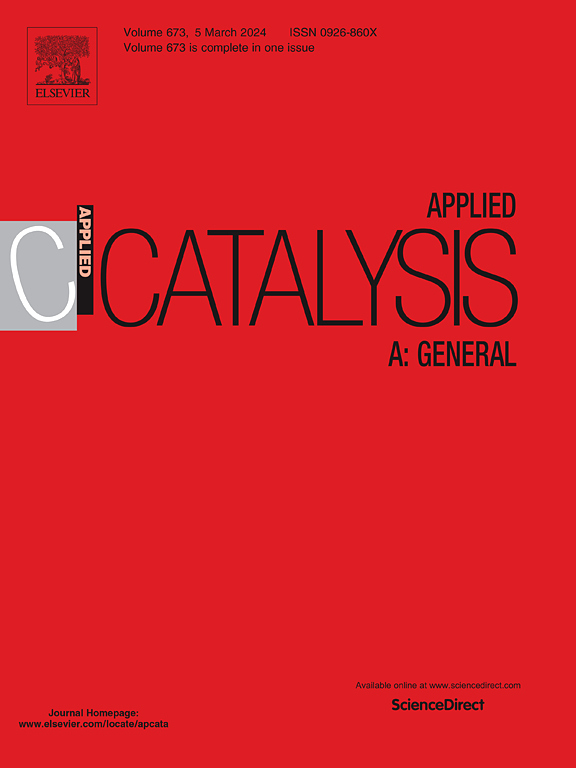CO2 fixation reaction over pyrimidinium-based dicationic ionic liquid in MIL-101(Cr)
IF 4.7
2区 化学
Q2 CHEMISTRY, PHYSICAL
引用次数: 0
Abstract
Modified metal-organic frameworks (MOFs) encapsulating new ionic N-heterocyclic-based functional groups, prepared via a ship-in-a-bottle approach, introduce a novel catalytic system for CO₂ conversion with epoxides. The MIL-101(Cr) framework was functionalized with novel ionic liquids (ILs) such as 1,5-bis(2-aminopyrimidinium)pentane bromide (2AMP-DBrP) and 1,5-bis(2-aminopyrimidinium)ethyl ether bromide (2AMP-DBrEE), resulting in cationic pyrimidinium-containing Cr-MOFs with free bromide ions, namely MIL101–2AMP-DBrP and MIL101–2AMP-DBrEE. Although the surface area (2456 and 2408 m²/g) and pore volume (1.44 and 1.41 cm³/g) of these encapsulated materials were reduced compared to pristine MIL-101(Cr) (3425 m²/g and 1.78 cm³/g), the CO₂ adsorption capacity at low pressure was notably increased (3.51 and 4.05 mmol g⁻¹ of CO₂). These modified MOFs demonstrated exceptional catalytic performance and stability in CO₂ fixation with various epoxides, achieving a high turnover frequency (TOF) of 82.5 h⁻¹ under mild conditions (0.1 MPa, 90 °C) without the need for co-catalysts or solvents, which are essential criteria for commercial viability. Moreover, in situ FTIR analysis suggests that the enhanced performance is due to CO₂ activation via carbamic acid formation facilitated by primary amino groups and epoxide activation through hydrogen bonding. This dual activation mechanism is critical for achieving high catalytic efficiency under mild conditions and underscores the innovative and significant advancements presented in this work compared to existing IL-MOFs.
求助全文
约1分钟内获得全文
求助全文
来源期刊

Applied Catalysis A: General
化学-环境科学
CiteScore
9.00
自引率
5.50%
发文量
415
审稿时长
24 days
期刊介绍:
Applied Catalysis A: General publishes original papers on all aspects of catalysis of basic and practical interest to chemical scientists in both industrial and academic fields, with an emphasis onnew understanding of catalysts and catalytic reactions, new catalytic materials, new techniques, and new processes, especially those that have potential practical implications.
Papers that report results of a thorough study or optimization of systems or processes that are well understood, widely studied, or minor variations of known ones are discouraged. Authors should include statements in a separate section "Justification for Publication" of how the manuscript fits the scope of the journal in the cover letter to the editors. Submissions without such justification will be rejected without review.
 求助内容:
求助内容: 应助结果提醒方式:
应助结果提醒方式:


